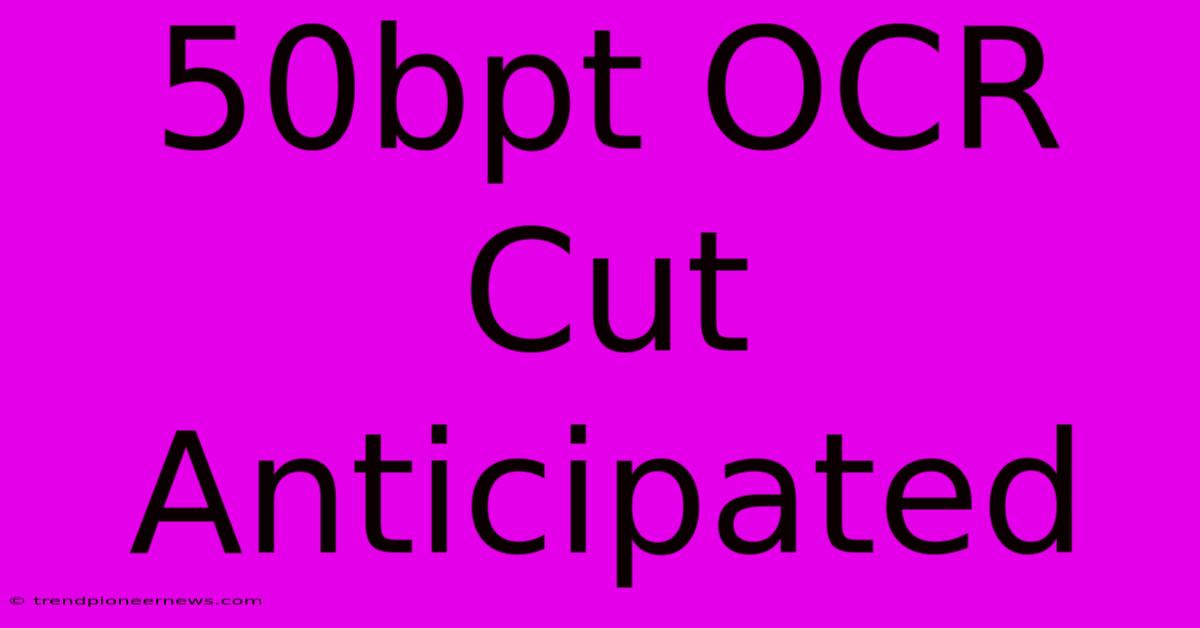50bpt OCR Cut Anticipated

Discover more detailed and exciting information on our website. Click the link below to start your adventure: Visit Best Website 50bpt OCR Cut Anticipated. Don't miss out!
Table of Contents
50BPT OCR Cut Anticipated: My Journey Through the Chaos (and How You Can Survive It Too!)
Okay, folks, let's talk about something that's been keeping me up at night: the anticipated 50BPT OCR cut. If you're not familiar, 50BPT (50 Billion Pages per Terabyte) refers to a crucial metric in optical character recognition (OCR) technology. Basically, it's a measure of how much data you can cram into a terabyte. A big cut means less storage for the same price, and that's a HUGE problem for anyone working with large-scale OCR projects.
I'll admit, when I first heard about this potential cut, I kinda freaked. I'd just finished a massive OCR project for a historical archive – think millions of pages – and the thought of needing even more storage space… ugh. It felt like a punch to the gut. My initial reaction was pure panic. I scrambled around, checking prices and storage solutions, feeling completely overwhelmed.
My Epic Fail (and What I Learned)
My first attempt at solving this? I went for the cheapest option. I found a cloud provider promising "unlimited" storage. Sounds awesome, right? Wrong. Turns out, their "unlimited" had a LOT of tiny print. There were usage limits, throttling, and hidden fees that almost bankrupted me. Talk about a rookie mistake! I felt like such a chump. I should have known better; I’ve been doing this for years. It really taught me a hard lesson: cheap isn't always cheerful when it comes to data storage.
What to Do When Facing a 50BPT OCR Cut
So, what did I do? I dusted myself off (after a healthy dose of ice cream, of course), and started researching seriously. This isn't some small hiccup; this is about the future of data handling and management. Here’s what I found worked:
-
Understand Your Needs: Before you even think about storage solutions, figure out EXACTLY how much data you're working with. Run some tests, analyze your current workflow, and predict future needs. I use a spreadsheet to track everything. It might seem tedious, but it's essential for planning.
-
Explore Compression Techniques: Don't just accept the initial storage size! Many OCR software packages offer compression options. Experiment to find the right balance between file size and data integrity. I found a 30% reduction using a lossless compression algorithm. Not bad, huh?
-
Investigate Alternative Storage: Cloud storage isn't always the answer. Consider hybrid solutions. Maybe a mix of cloud and on-premise storage would be better suited for your needs. You should also evaluate factors like bandwidth, latency and the type of storage like SSD vs HDD when making your decision.
-
Plan for the Future: Don't just react to the 50BPT cut. This is a sign of things to come. Build a flexible and scalable storage strategy that accounts for future growth and potential changes in storage technology. This can save you a massive headache in the long run.
Don’t Panic – Plan!
The anticipated 50BPT OCR cut is scary, but it's not the end of the world. By taking a proactive approach, understanding your needs, and exploring different options, you can navigate this challenge and keep your OCR projects on track. Remember my epic fail? Learn from it! Don’t just jump into the first solution you see. Do your research, plan carefully, and you'll be fine. Trust me on this one. I learned the hard way!

Thank you for visiting our website wich cover about 50bpt OCR Cut Anticipated. We hope the information provided has been useful to you. Feel free to contact us if you have any questions or need further assistance. See you next time and dont miss to bookmark.
Featured Posts
-
Watch Barcelona Brest Online
Nov 27, 2024
-
Rohl Reveals Sheffield Wednesday Challenges
Nov 27, 2024
-
Morgan Freeman Giorgio Dinner
Nov 27, 2024
-
Sa Vs Sl Day 1 Score Two Early Wickets
Nov 27, 2024
-
Small Business Owner Election Petition
Nov 27, 2024
